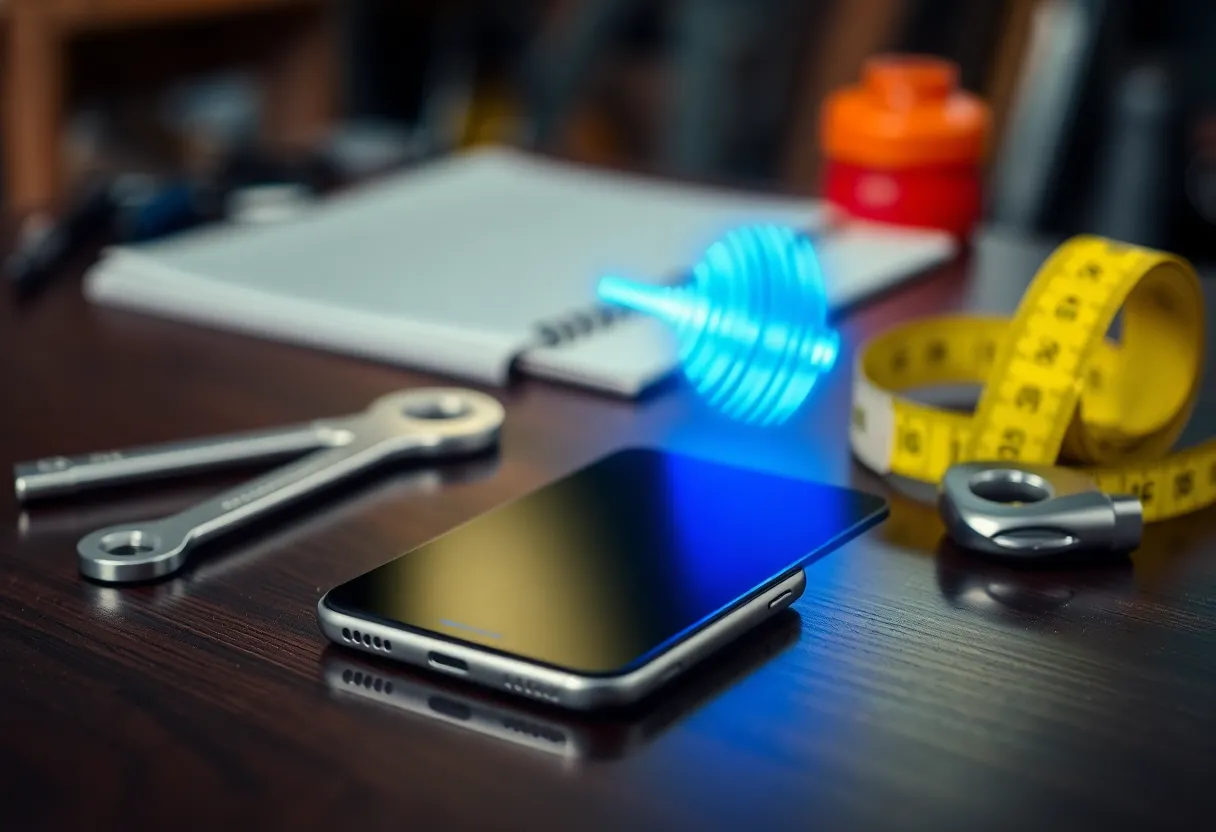When nearby shoppers search “plumber near me” or “open now,” your next customer could be minutes away. An AI sales assistant can greet them instantly, answer questions, qualify the lead, and book the job — even after hours — so you never miss another inquiry.
What is an AI sales assistant?
An AI sales assistant is a conversational agent (web chat, SMS, social messaging, or voice) trained on your products, services, prices, and policies. It responds instantly, captures contact details, qualifies buyers, books appointments, and routes complex cases to a human — all while keeping a transcript in your CRM.
What it can do for a local business
- Answer pricing, availability, and “service area” questions in seconds.
- Offer “next best action” — e.g., schedule, estimate, or callback — based on intent.
- Collect name, phone, email, ZIP/postcode, and job details for follow-up.
- Escalate seamlessly to a person when nuance or safety is involved.
Leaders expect a rapidly increasing share of routine interactions to be handled without a person, freeing human staff for high‑value work (Zendesk, 2025). (zendesk.com)
Why “near you” matters for local sales
Local intent is urgent: people who run a local search on their phones often visit a nearby business the same day, and a meaningful share make a purchase soon afterward (Think with Google, 2016). (thinkwithgoogle.com)
Reviews drive choices, too. In 2025, most consumers used Google to check local business reviews and many consult multiple sources before deciding — a cue to keep your profiles accurate and responsive (BrightLocal, 2025). (brightlocal.com)
What that means for you
- Respond in minutes, not hours — especially outside business hours.
- Show accurate hours, service radius, and next availability.
- Offer instant booking/estimate from any page visitors land on.
Benefits and ROI for small businesses
- 24/7 lead capture: Turn after‑hours website visits into scheduled jobs.
- Faster speed‑to‑lead: Responding promptly greatly improves your odds of qualifying and contacting a lead (Harvard Business Review, 2011). (hbr.org)
- Lower handling costs: Generative AI can raise customer‑care productivity by an estimated 30–45% (McKinsey, 2023). (upgrade.mckinsey.com)
- Better CX, more sales: Organizations leading in human‑centric AI report higher acquisition, retention, and cross‑sell outcomes (Zendesk, 2025). (zendesk.com)
- Competitive advantage: While overall AI use among U.S. businesses remains in the low double digits as of mid‑2025, adopters focus on virtual agents, marketing automation, and analytics — areas where small firms can win quickly (U.S. Census Bureau, 2025; 2024). (census.gov)
Tip: If you already use scheduling, CRM, or help desk software, choose an assistant that plugs in natively. See our integrations for common tools used by small businesses.
How AI assistants handle sales inquiries
1) Understand intent
The assistant uses natural language understanding to detect whether the visitor wants pricing, appointment times, service eligibility by ZIP, or something else. It then clarifies with a brief follow‑up question to reduce back‑and‑forth.
2) Personalize by location
For local businesses, the bot can prioritize nearby service areas, show the closest branch, and quote travel windows based on the customer’s ZIP code.
3) Offer the “next best step”
- Instant booking with calendar availability.
- “Text me the estimate” for mobile visitors.
- Escalate to live agent when high value or sensitive.
4) Sync data
Every conversation — including opt‑ins and consent — is logged in your CRM and help desk so your team can follow up without losing context.
Try it: See how Small Business Chatbot greets visitors and captures leads in under a minute of setup. Start free
Step-by-step implementation checklist
- Define goals: examples — more bookings, faster quotes, fewer missed calls.
- Pick channels: website chat, SMS, Facebook Messenger, WhatsApp, or voice.
- Connect systems: CRM, calendar, payments, ticketing. (See integrations.)
- Load knowledge: URL crawl, FAQs, pricing, services, service area ZIPs.
- Set guardrails: handoff rules, compliance notices, data retention.
- Design playbooks: greeting, qualification, booking, objection handling.
- Test: run 10–20 real scenarios on desktop and mobile; adjust tone and fallbacks.
- Launch and coach: teach staff when and how to jump in; monitor transcripts.
How to measure impact
Essential metrics
- Speed‑to‑first‑response (FRT): goal < 60 seconds for chat.
- Lead capture rate: percent of chats producing usable contact info.
- Qualified rate: leads meeting your budget/service area criteria.
- Booked jobs/appointments: completed within chat.
- Revenue influence: closed‑won deals that touched the assistant.
- Customer satisfaction (CSAT): quick 1–5 rating after each chat.
Speed matters. In classic research, contacting leads quickly dramatically increased the odds of qualifying — a principle that still holds in the era of AI‑assisted sales (Harvard Business Review, 2011). (hbr.org)
Research highlight
Why AI assistants help you win local, high‑intent buyers
- Consumers expect more automated resolution: 75% of CX leaders expect 80% of interactions to be solved without human intervention in the next few years (Zendesk, 2025). (zendesk.com)
- Local search turns into action fast: 76% of smartphone local searches lead to a visit within 24 hours and 28% to a purchase (Think with Google, 2016). (thinkwithgoogle.com)
- AI can lower support costs while improving service: generative AI can increase customer‑care productivity by 30–45% (McKinsey, 2023). (upgrade.mckinsey.com)
Frequently asked questions for AI sales assistants
- How fast can I set up an AI sales assistant?
- Most small businesses can launch in under an hour by connecting their website and calendar, importing FAQs, and turning on basic lead capture. Complex integrations can be added later.
- Will it handle “near me” leads better than a contact form?
- Yes. When people search locally, they often want immediate answers and a quick way to book. A conversational flow that confirms ZIP code, service, and time window converts those visits into scheduled jobs faster (Think with Google, 2016). (thinkwithgoogle.com)
- Does this replace my team?
- No. Assistants automate repetitive questions and first‑step qualification, then hand off complex issues. CX leaders increasingly use AI to resolve routine interactions so humans can focus on nuanced cases (Zendesk, 2025). (zendesk.com)
- Is AI adoption really happening among small businesses?
- Adoption is growing but uneven. U.S. Census data show overall business use of AI rising from about 4–5% in late 2023/early 2024 to near 10% by May 2025, with common uses including virtual agents (U.S. Census Bureau, 2025; 2024). (census.gov)
- How do I measure ROI?
- Track booked appointments, qualified leads, and closed revenue influenced by the assistant. Also watch first‑response time and deflection of routine inquiries to quantify labor savings.
- What about data privacy and accuracy?
- Choose a vendor with clear data‑handling policies, audit trails, and human handoff. Keep knowledge bases current and restrict the assistant from answering outside its scope.
- Can I connect it to my existing tools?
- Yes. Most small businesses start by connecting their CRM and calendar. Explore what’s available in our integrations.
Curious how this feels for customers? Read real outcomes on our customer reviews page.
Sources
- Zendesk. “2025 CX Trends Report: Human‑Centric AI Drives Loyalty.” November 20, 2024. zendesk.com. (zendesk.com)
- Think with Google. “Local search conversion statistics.” 2016. thinkwithgoogle.com. (thinkwithgoogle.com)
- Harvard Business Review. “The Short Life of Online Sales Leads.” 2011. hbr.org. (hbr.org)
- McKinsey & Company. “The economic potential of generative AI: The next productivity frontier.” 2023. mckinsey.com. (upgrade.mckinsey.com)
- BrightLocal. “Local SEO statistics for 2025.” 2025. brightlocal.com. (brightlocal.com)
- U.S. Census Bureau. Business Trends and Outlook Survey (AI use snapshots, 2023–2025). census.gov. (census.gov)



